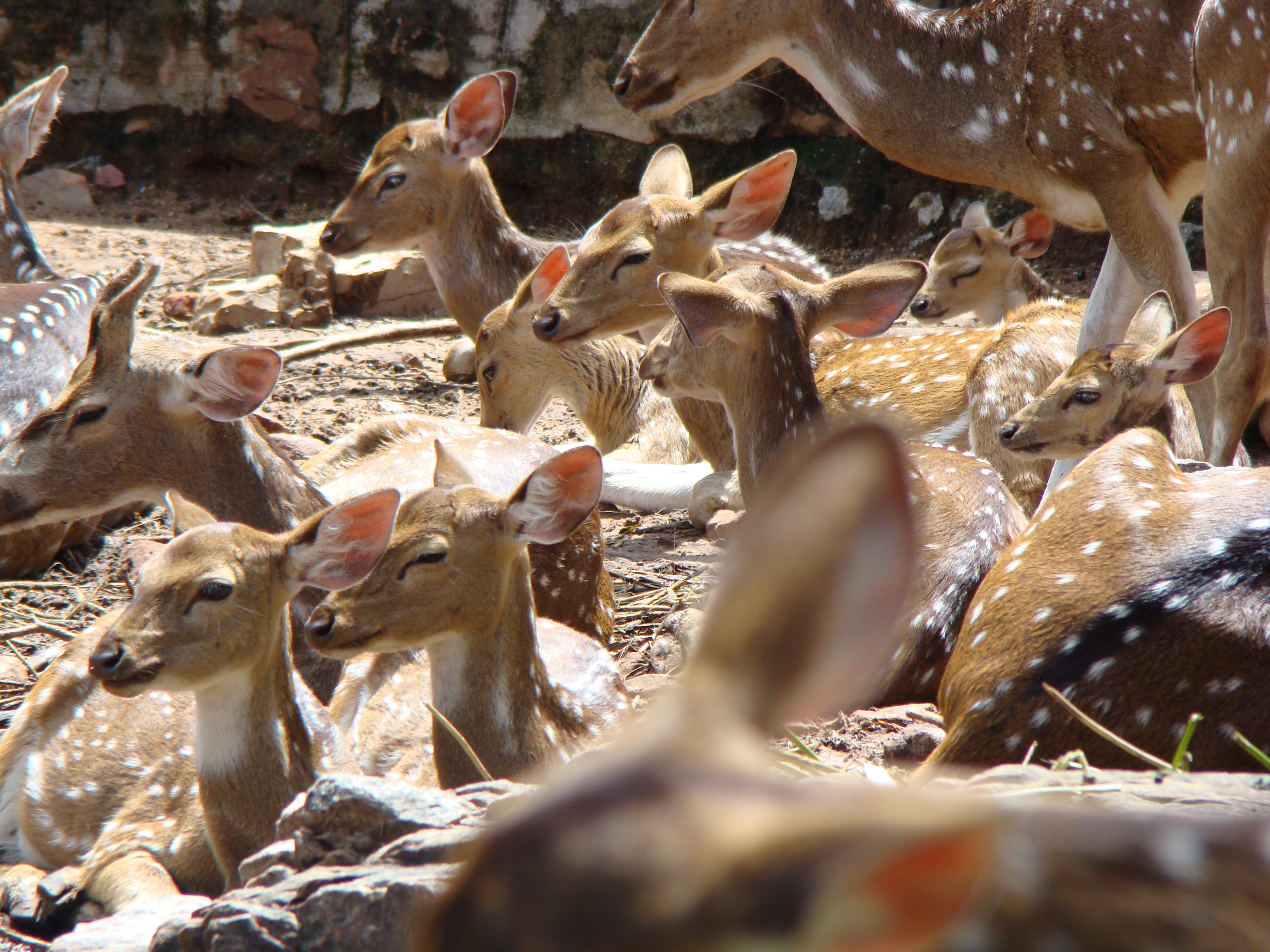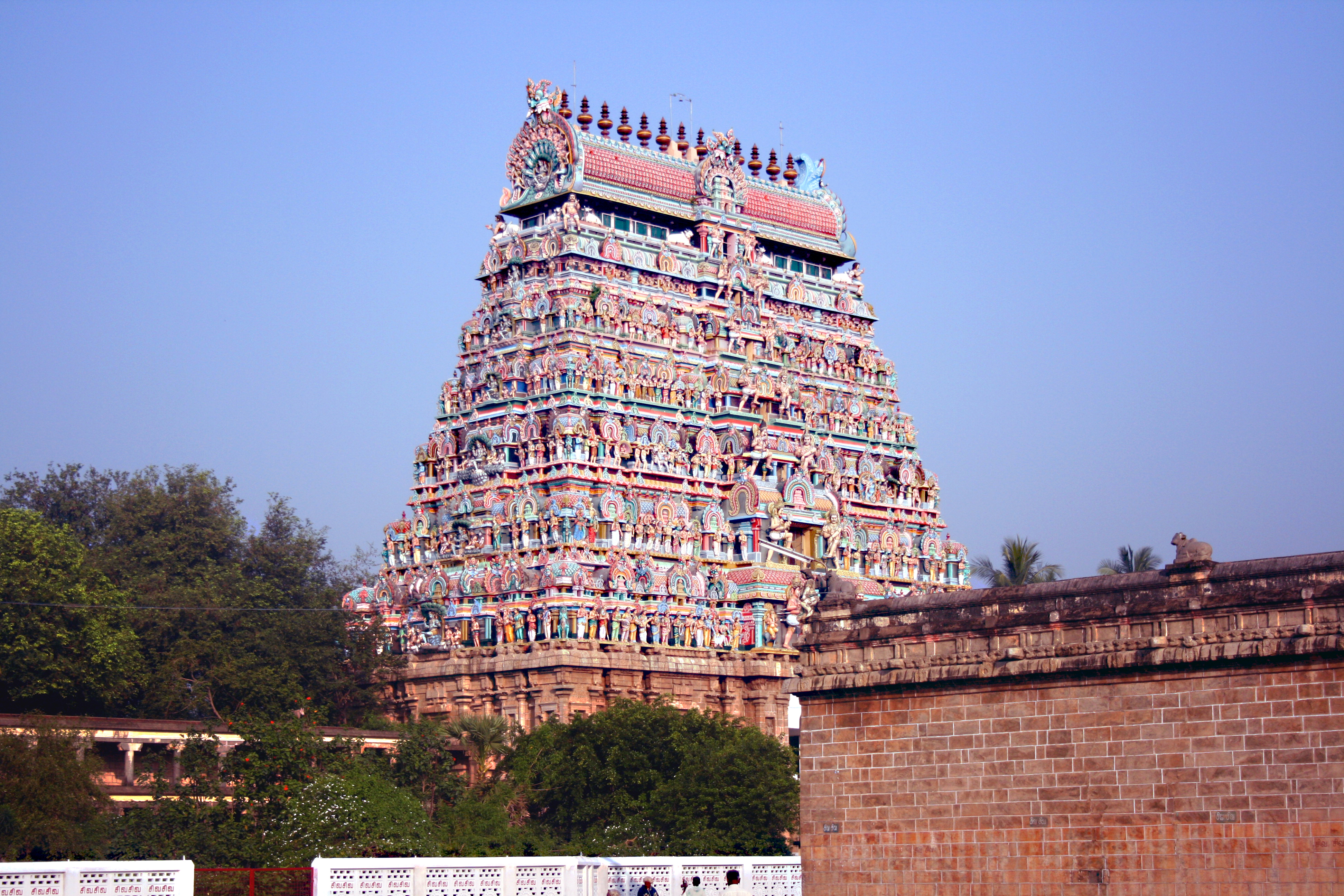|
Chevvappa Nayak
Sevappa Nayak was a governor of Thanjavur under the Vijayanagar Empire who later proclaimed his independence and founded the Thanjavur Nayak kingdom. He reigned from 1532 to 1560. Ancestry and personal life Sevappa was the successor of his father was a Thimappa Nayak (Or) called Thimmabuban. The family hailed from Nedungundram near Thiruvannamalai. Sevappa is also Worked as to be a Vaasal Karar of the Vijayanagar Emperor, Achyuta Deva Raya, the younger brother of Krishnadeva Raya for the Telugu histories ''Tanjavuri Andhra Rajula Charitramu'' and ''Tanjavuri Vari Charitram'' claim that Sevappa got Thanjavur as ''stri-dana''or dowry. However, this opinion is not universally held by scholars. Campaigns Records indicate that Sevappa was a loyal vassal of the Vijayanagar kings and assisted them in their campaigns. Sevappa was the honorary "betel-bearer" (''Adappam'' in Tamil and ''Tambula Karandavahin'' in Sanskrit) of Achyuta Deva Raya. Reign Sevappa's epigraphs are v ... [...More Info...] [...Related Items...] OR: [Wikipedia] [Google] [Baidu] |
Vijayanagar Empire
The Vijayanagara Empire, also called the Karnata Kingdom, was a Hinduism, Hindu empire based in the region of South India, which consisted the modern states of Karnataka, Andhra Pradesh, Tamil Nadu, Kerala, Goa and some parts of Telangana and Maharashtra. It was established in 1336 by the brothers Harihara I and Bukka Raya I of the Sangama dynasty, members of a pastoralist Herder, cowherd community that claimed Yadava lineage. The empire rose to prominence as a culmination of attempts by the southern powers to ward off Islamic invasions of India, Perso-Turkic Islamic invasions by the end of the 13th century. At its peak, it subjugated almost all of South India's ruling families and pushed the sultans of the Deccan beyond the Tungabhadra River, Tungabhadra-Krishna River, Krishna river doab region, in addition to annexing modern day Odisha (ancient Kalinga (historical region), Kalinga) from the Gajapati Empire, Gajapati Kingdom thus becoming a notable power. It lasted until 1646 ... [...More Info...] [...Related Items...] OR: [Wikipedia] [Google] [Baidu] |
Brihadeeswarar Temple
Brihadishvara Temple, called Rajarajesvaram () by its builder, and known locally as ''Thanjai Periya Kovil'' ("Thanjavur Big Temple") and ''Peruvudaiyar Kovil'', is a Shaivite Hindu temple built in a Chola architectural style located on the south bank of the Cauvery river in Thanjavur, Tamil Nadu, India.Thanjavur Encyclopaedia Britannica It is one of the largest Hindu temples and an exemplar of . It is also called ''Dakshina Meru'' (" |
Vijayanagara Empire
The Vijayanagara Empire, also called the Karnata Kingdom, was a Hinduism, Hindu empire based in the region of South India, which consisted the modern states of Karnataka, Andhra Pradesh, Tamil Nadu, Kerala, Goa and some parts of Telangana and Maharashtra. It was established in 1336 by the brothers Harihara I and Bukka Raya I of the Sangama dynasty, members of a pastoralist Herder, cowherd community that claimed Yadava lineage. The empire rose to prominence as a culmination of attempts by the southern powers to ward off Islamic invasions of India, Perso-Turkic Islamic invasions by the end of the 13th century. At its peak, it subjugated almost all of South India's ruling families and pushed the sultans of the Deccan beyond the Tungabhadra River, Tungabhadra-Krishna River, Krishna river doab region, in addition to annexing modern day Odisha (ancient Kalinga (historical region), Kalinga) from the Gajapati Empire, Gajapati Kingdom thus becoming a notable power. It lasted until 1646 ... [...More Info...] [...Related Items...] OR: [Wikipedia] [Google] [Baidu] |
Annamalai University
, logo = CampusmapofAU.jpg , image = Annamalai University logo.png , image_size = 225px , motto = "With Courage and Faith" , established = , type = State University (Government) , endowment = , administrative_staff = , faculty = , president = , principal = , rector = , chancellor = Governor of Tamil Nadu , vice_chancellor = R. M. Kathiresan , head_label = , head = , academic_staff = 2,281 , students = 32,480 , undergrad = 23,256 , postgrad = 8,067 , doctoral = 998 , city = Chidambaram, Tamil Nadu , country = India , coordinates = , campus = Rural, , campus_size = , languag ... [...More Info...] [...Related Items...] OR: [Wikipedia] [Google] [Baidu] |
Achuthappa Nayak
Achuthappa Nayak was the Thanjavur Nayak king who ruled from 1560 to 1614. From 1560 to 1580, he was co-monarch along with his father and from 1580 to 1614, he ruled on his own. His reign is generally regarded as one of peace and stability. Personal life Achuthappa Nayak was the eldest son of Sevappa Nayak, the Vijayanagar feudatory of Arcot who founded the Thanjavur Nayak dynasty. His principal queen was Murtimamba. Names Achuthappa Nayak was named by Sevappa Nayak after the Vijayanagar Emperor Achyuta Deva Raya. During his lifetime, Achuthappa Nayak was also known as Chinna Seva Achyutha and Sevappa Achyutha. Reign Achuthappa ruled for a total of 54 years during which Thanjavur experienced architectural and cultural development. While the earlier part of his reign was peaceful, there was warfare with Muslim and Portuguese invaders towards the end. He maintained peaceful relations with the Vijayanagar kings and assisted them in their campaigns. Achuthappa was assiste ... [...More Info...] [...Related Items...] OR: [Wikipedia] [Google] [Baidu] |
Vijayendra Tirtha
Vijayīndra Tīrtha ''(also known as Vijayendra Tīrtha)'' (1514 - 1595) was a Dvaita philosopher and dialectician. A prolific writer and an unrelenting polemicist, he is said to have authored 104 treatises expounding the principles of Dvaita and defending it against attacks from the contemporary orthodox schools of Vedanta. He held the pontifical seat at Kumbakonam under the rule of Thanjavur Nayaks where he participated in polemical discussions with the Advaita philosopher Appayya Dikshita Inscriptions from that era record grants of villages received by Vijayindra for his triumph over theological debates . Legend ascribes to him mastery over 64 arts and his erudition, writes Sharma, "is evident from a few of his works bearing on Purva Mimamsa, Nyaya and Kavya literature". Life Almost nothing is known about his early life and family. Most of the information on Vijayindra is derived from a few inscriptions and two hagiographies: ''Rāghavendra Vijaya'' and ''Guruguṇastavana' ... [...More Info...] [...Related Items...] OR: [Wikipedia] [Google] [Baidu] |
Madhva
Madhvacharya (; ; CE 1199-1278 or CE 1238–1317), sometimes anglicised as Madhva Acharya, and also known as Purna Prajna () and Ānanda Tīrtha, was an Indian philosopher, theologian and the chief proponent of the '' Dvaita'' (dualism) school of Vedanta. Madhva called his philosophy ''Tattvavāda'' meaning "arguments from a realist viewpoint". Madhvacharya was born on the west coast of Karnataka state in 13th-century India. As a teenager, he became a Sanyasi (monk) joining Brahma-sampradaya guru Achyutapreksha, of the Ekadandi order. Madhva studied the classics of Hindu philosophy, and wrote commentaries on the Principal Upanishads, the '' Bhagavad Gita'' and the Brahma Sutras (''Prasthanatrayi''), and is credited with thirty seven works in Sanskrit. His writing style was of extreme brevity and condensed expression. His greatest work is considered to be the ''Anuvyakhyana'', a philosophical supplement to his bhasya on the Brahma Sutras composed with a poetic structure. In s ... [...More Info...] [...Related Items...] OR: [Wikipedia] [Google] [Baidu] |
Nanjikottai
Nanjikottai is a panchayat town in Thanjavur district in the Indian state of Tamil Nadu. It is a part of the Thanjavur urban agglomeration. Demographics India census A census is the procedure of systematically acquiring, recording and calculating information about the members of a given population. This term is used mostly in connection with national population and housing censuses; other common censuses incl ..., Nanjikottai had a population of 21,898. Males constitute 50% of the population and females 50%. Nanjikottai has an average literacy rate of 81%, higher than the national average of 59.5%: male literacy is 86%, and female literacy is 76%. In Nanjikottai, 9% of the population is under 6 years of age. References Cities and towns in Thanjavur district {{Thanjavur-geo-stub ... [...More Info...] [...Related Items...] OR: [Wikipedia] [Google] [Baidu] |
Srisailam
Srisailam is a census town in Nandyal district of the Indian state of Andhra Pradesh. It is the mandal headquarters of Srisailam mandal in Atmakur revenue division. It is located about from the district headquarters Nandyal, from Kurnool, and it is located about from Vijayawada. The town is famous for Mallikarjuna Jyotirlinga Temple and is one of the holy pilgrimage sites for Saivism and Shaktism sects of Hinduism. The town is classified as both Jyotirlinga and Shakti Peetha. Demographics India census, Srisailam had a population of 23,257. Males constituted 54% of the population and females 46%. Srisailam Project (RFC) Township has an average literacy rate of 75.62% higher than the state average of 67.02%. Male literacy is around 85.68% while female literacy rate is 63.24%. 13% of the population is under 6 years of age. Tourism Srisailam is one of the popular tourist destinations in Andhra Pradesh and considered one of the most important pilgrimage centres of Lord S ... [...More Info...] [...Related Items...] OR: [Wikipedia] [Google] [Baidu] |
Thirumala
Tirumala is a spiritual town in Tirupati district of the Indian state of Andhra Pradesh. It is one of the suburbs of the Tirupati urban agglomeration. The town is a part of Tirupati Urban Development Authority and located in Tirupati (rural) mandal of Tirupati revenue division. It is a hill town where Tirumala Venkateswara Temple is located, which is the abode of Vishnu. The town is strictly vegetarian. Geography Tirumala is located above sea level and covers an area of approximately . Surrounding the hills are seven peaks of Seshachalam range, Eastern Ghats namely Seshadri, Neeladri, Garudadri, Anjanadri, Vrushabadri, Narayanadri and Venkatadri. The temple of Sri Venkateswara is on the seventh peak ( Venkatadri). At the point on the Tirupati – Tirumala Ghat road, there is a major discontinuity of stratigraphic significance that represents a period of remarkable serenity in the geological history of the Earth. This is referred to as the Eparchaean Unconformity. This ... [...More Info...] [...Related Items...] OR: [Wikipedia] [Google] [Baidu] |
Nataraja Temple, Chidambaram
Thillai Nataraja Temple, also referred as the Chidambaram Nataraja Temple, is a Hindu temple dedicated to Nataraja, the form of Shiva as the lord of dance. This temple is located in Chidambaram, Tamil Nadu, India. This temple has ancient roots and a Shiva shrine existed at the site when the town was known as Thillai. Pal 1988, p. 19 Chidambaram, the name of the city literally means "stage of consciousness". The temple architecture symbolizes the connection between the arts and spirituality, creative activity and the divine.Chidambaram Encyclopædia Britannica The temple wall carvings display all the 108 karanas from the '''' by Bharata Muni, and these postures form a foundation of |
Sivaganga Park
Sivaganga Park is a recreational park in the city of Thanjavur in Tamil Nadu, India. It adjoins the Brihadeeswarar Temple, a popular tourist destination. History The Sivaganga Park was created as a people's park by the Tanjore municipality in 1871-72. It is situated to the east of the 11th century Brihadeeswarar Temple and encompasses the Sivaganga Tank believed to have been built by the Medieval Chola king Raja Raja Chola Rajaraja I (947 CE – 1014 CE), born Arunmozhi Varman or Arulmozhi Varman and often described as Raja Raja the Great or Raja Raja Chozhan was a Chola emperor who reigned from 985 CE to 1014 CE. He was the most powerful Tamil king in South .... In the initial days, the park was not maintained as the locality was overcrowded and ill-ventilated. However, the park is fairly maintained now. As a part of the makeover operations in the lead up to the 1994 World Tamil Conference, motor boating facilities were introduced in the Sivaganga Tank. Facilitie ... [...More Info...] [...Related Items...] OR: [Wikipedia] [Google] [Baidu] |
.jpg)



